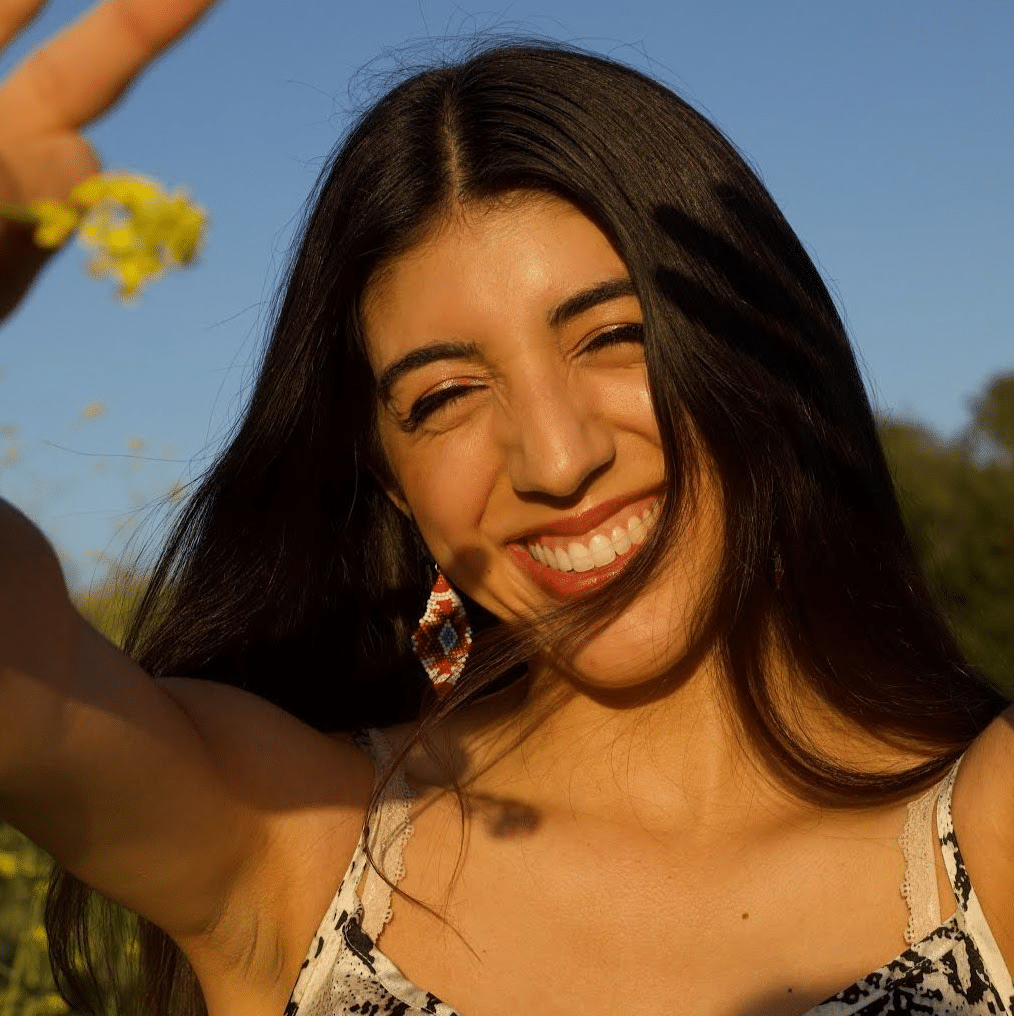HonoringChicanaAestheticsWithPhotographerBrittanyBravo
Honoring Chicana Aesthetics With Photographer Brittany Bravo

Get Inspired by Brittany Bravo’s
Flex Block Template
Celebrating the release of the new flex block feature, Format collaborated with Brittany to develop a project template that can be used by all Format members.
Flex block allowed me to create the project page of my dreams.It allows my clients to be imaginative and see the potential of my work and how it translates well into editorial spaces. I love that I can control the scale of each element.
Try Brittany’s template on your own site to achieve an editorial look.
Can you introduce yourself, and share how you got into photography?
My name is Brittany Bravo. I am a photographer from Los Angeles, and a third generation Angelino. So my family’s been in LA for a long time and I feel super proud to be from LA.
I got into photography when I was in middle school. My mom gifted me and my little sister a little red point and shoot camera for Christmas–we were so excited about it. It was a shared Christmas present, and we would just play with it all day. We would take pictures of our neighbors, riding their bikes through puddles and we’d make them do it again and again. Then we’d see all the water in the pictures freeze in the air around their bike. And we’re like, “Whoa, this is so cool. Oh my gosh, we froze water in the photo!”
I thought it was the neatest thing. We would force our cousins to be actors in our little movies because the camera could take video too. My sister would fight and argue over who was the director and over what direction to go–we were literally little kids fighting over who’s the director. We’d stay up all night editing it on Windows Movie Maker, and then we would make all our aunts and uncles and our parents watch the movie in the end.
For us, it was just a way to have fun and explore our world, and really bonding for us too. Now we’re both photographers–my sister does e-commerce photography. She actually assists me on a lot of my personal projects–she’s almost always there. She used to do a lot of dancing, hip hop and lyrical, so she’s really good at coming up with poses.
She mostly shoots film for her own personal work and brings her film camera along when she’s helping–we’re super close and really collaborative, and she definitely adds an extra element to my personal projects. I think it’s really cool that it’s something we both found joy and fun in and I think to this day it’s still a source of joy and fun for us.
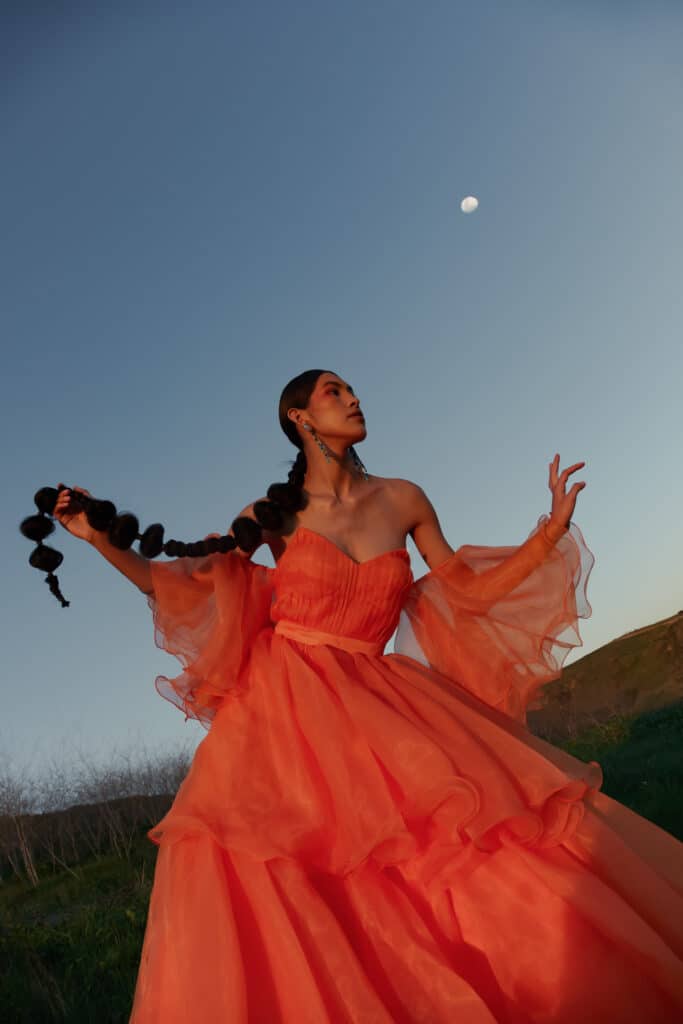
In your bio you talk about being a third-generation Angelino with Chicana roots. How does that impact your aesthetic in your personal projects?
Being third generation with Chicano roots really impacts my aesthetic. I take a lot from the aesthetics of my community and culture. Los Angeles is really distinctly known for Chicano culture.
It’s really cool looking at old photos of my own family members and seeing my dad and aunt and their teens, with the lip liner and the whole outfits and everything. I love kind of honoring that aesthetic in my work, but also being really creative with it too. I love this term, Indigenous Futurism.
To me, it’s about taking traditions of your culture and still being really imaginative and creative with it because culture is such an alive thing and every day it evolves and changes. And I think we’re here, we’re alive, we’re here right now, we exist still. So it’s taking traditions, traditional aesthetics, and then being really fun with it.
This can come together as taking something like trenzas, which are part of Mexican and Mexican-American and indigenous hair iconography, and making it 10 feet–all the way to the floor. The symbolism becomes really clear and it’s imaginative and kind of otherworldly in a sense. Honoring my culture in my work is really, really important to me and it’s definitely impacted the styling and the hair in my images, and the talent that I choose to work with as well.
One thing for me that’s really important is putting my community up on a pedestal and photographing folks with honor and a lens of respect, highlighting how beautiful and powerful and strong my community and culture are. I make the work for people like me and for my community so we can look at it and be like, “Heck yeah, we’re beautiful, we’re amazing and no one can ever tell me different. No matter what life experiences I have, no one can take that pride away from me.”
You maintain both a personal and a commissioned collaborative practice. Do you see these as separate practices or connected?
For me, both of these are important. The commissioned work helps me support and fund the personal work–and the personal work brings more commissioned work. They kind of feed into each other in a sense. I honestly love both equally, they’re both really fun.
Commission projects really challenge and push me in new ways and teach me how to be really collaborative. With my personal work, I create to my heart’s content and I make the things I’ve always wanted to make and always wanted to see in the world, and it’s never ending. There’s always so many more photos in my head–what I’ve put into the world is just the tip of the iceberg.
Something that’s been really great about that is, people will turn to me and say, “I love those photos of the ten foot braids. That’s amazing. Could you photograph my vitamin brand?” People will hire me for my ability to connect with talent and to bring forth the feeling of joy and sense of pride and respect in my subjects, even if the styling and aesthetic in my personal work is totally different than the commissioned work.
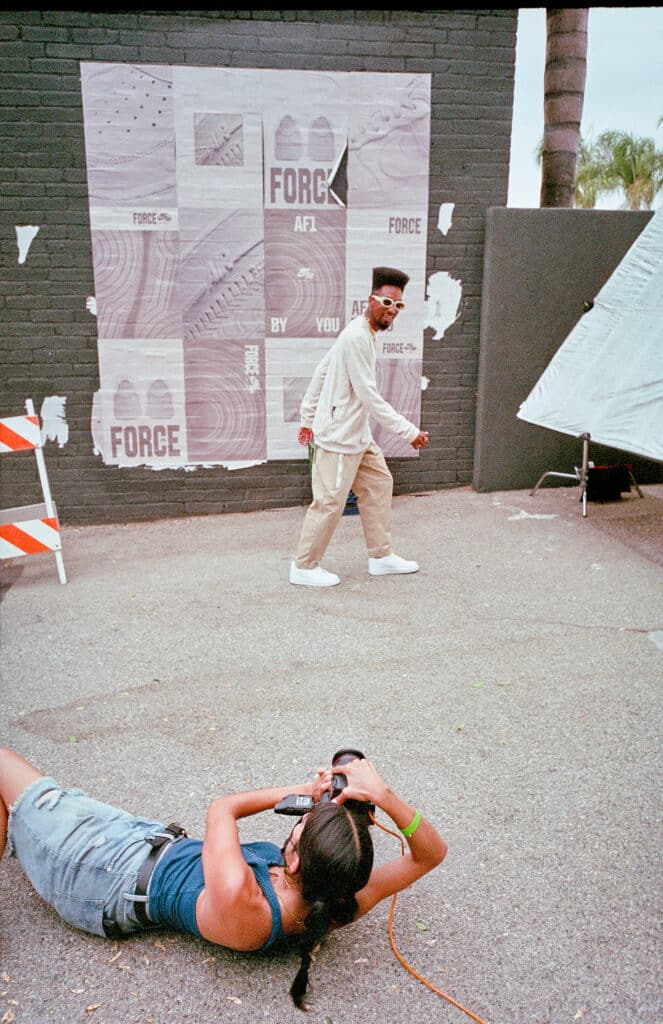
How did you get started in doing this kind of commission work?
I got started doing commission work by networking, doing a lot of research, listening to a lot of podcasts, and seeing what industry professionals said you had to do to get noticed by those kinds of clients.
I joined photography membership associations and organizations and tried getting my name on directories like Diversify photo–and then I heard that portfolio reviews were a really great way to meet folks one on one, so then I started signing up for portfolio reviews.
Portfolio reviews are some of the best ways to meet potential clients–a lot of big clients I worked with initially, I met through those reviews. They saw the work and I was still pretty green and didn’t have much experience, but they were willing to give me a chance because they saw the potential in my body of work.
I also did email newsletters and I even mailed out–I know a lot of folks say this is old school–but I actually mailed out little postcards to potential clients. I went on LinkedIn and found a bunch of folks who worked at the companies I wanted to shoot for, like Target for example. Then I went on the company’s LinkedIn page to see what their address was. I thought, “I have no idea if this person actually works at their headquarters or not, but I’ll try sending it to them anyways. And fingers crossed it gets to them.”
I recently met someone in person that I had sent one to, and she said, “Oh my gosh, you sent me a flyer three years ago, and I loved it so much, I sent it to all my team!” The funny part is–that client is actually one I work with a lot now; very considerate, huge brand, I’ve worked with them over six times in the past two years. They’ve been a really consistent client for me–that all came because I sent that one flyer to her and she forwarded it to the team that initially hired me, and then I grew that relationship with them. So even if it only worked for one person and I sent fifty of them, it was well worth the labor for that.
Traditional marketing practices for getting your work in front of potential clients can still be beneficial; it’s worth the risk. And it’s fun too, because then you print out your work and having your work be tactile instead of just digital all the time is a really fun experience. Even if it doesn’t get anything for you right away, you’re still planting seeds, and trees don’t grow overnight.
I have artist representation now, but that didn’t slow down my desire to network and still propel my own career forward in a sense. I’m still always thinking, “How can I get my work more tactile and more in person, especially in such a digital world?” It helps folks stand out.
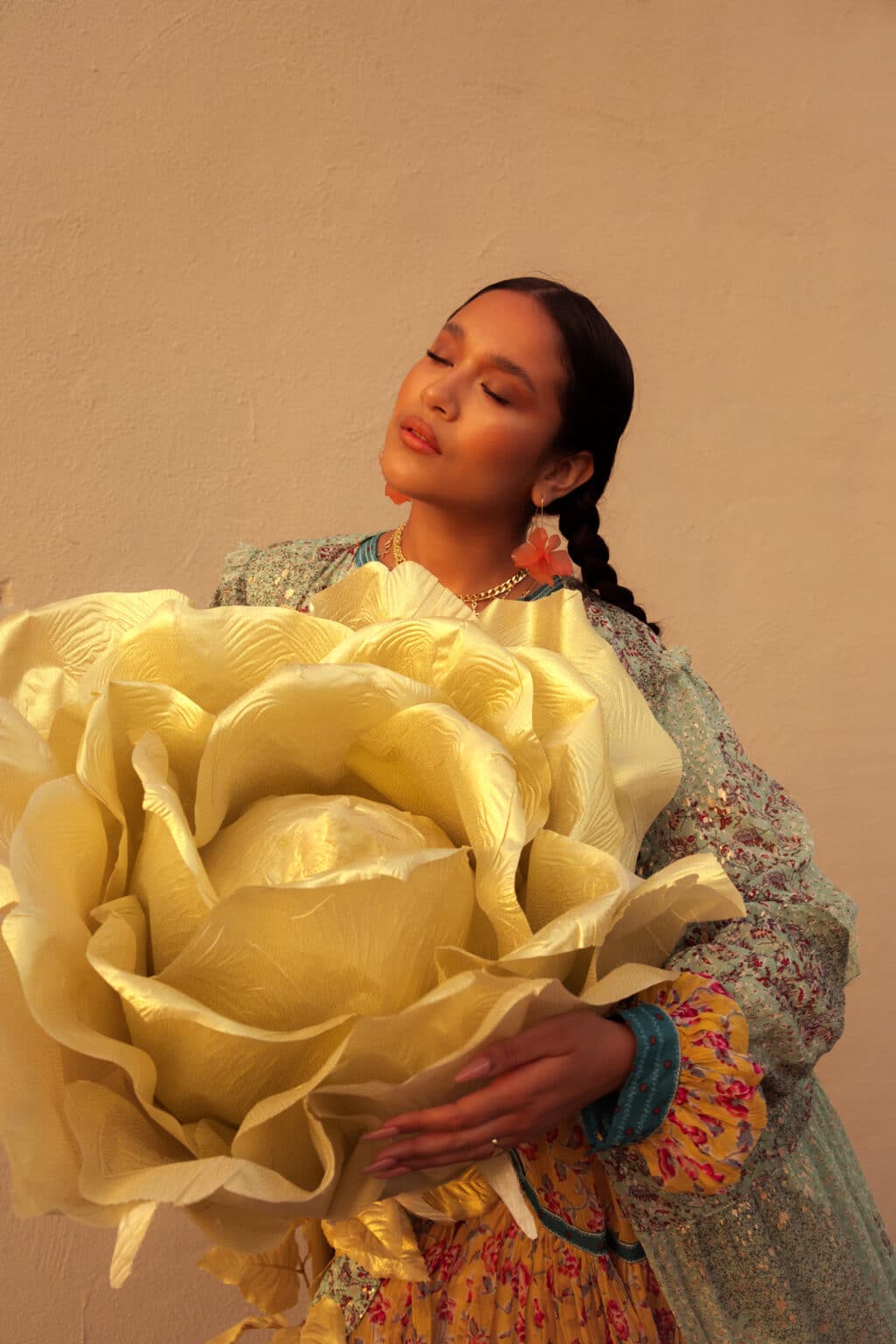

Where do you find portfolio reviews?
The first portfolio review I ever did was through Palm Springs Photo Festival. Then I also did one through Diversify Photo. I did the American Photographic Artists–you can pay for a membership–and you can get them through Focus On Women.
A lot of the photography organizations and associations have portfolio reviews available that you can pay for. They are expensive for sure, so it’s one of those things when I was first freelancing that I saved up for it and then got it, and then fortunately over time it’s been less of a burden to do them for myself. I know for a lot of folks it may be inaccessible–sometimes they do free ones for BIPOC or emerging artists and you just have to apply for it, or ask if they have a discount or offer free ones–you might get surprised by what they say.
Are there any other free resources you found really helpful or still use now?
A podcast I found helpful when I was first starting was Dear Art Producer. The world of commercial work seemed really mysterious to me, and I wasn’t really sure how it worked at all. I was like, well, what is this? Who are–what are art producers? What’s an art director, creative director, all that stuff. I liked it because they would interview different folks who worked in those roles–they would talk about their perspective, how they got their start in their careers, and what they do at their agencies. That helped me learn how to be a better creative partner on set.
A podcast I love listening to now is Photo Dump–it’s by and for working photographers. They’ll interview commercial or different types of photographers, and they’ll talk about their journey–what’s working for them right now and the type of work they’re creating. It’s just really fun to listen to–I feel like I get a little peek into their world.
What other advice would you give emerging photographers that are just starting out in commercial photography?
The advice I would give emerging photographers is to always honor yourself and your vision. Let that be your North Star and guide the work you create, personal and commissioned. I think the more you stay true to yourself in both types of work, the more work you’ll attract, and the more successful you’ll be at creating that work, too.
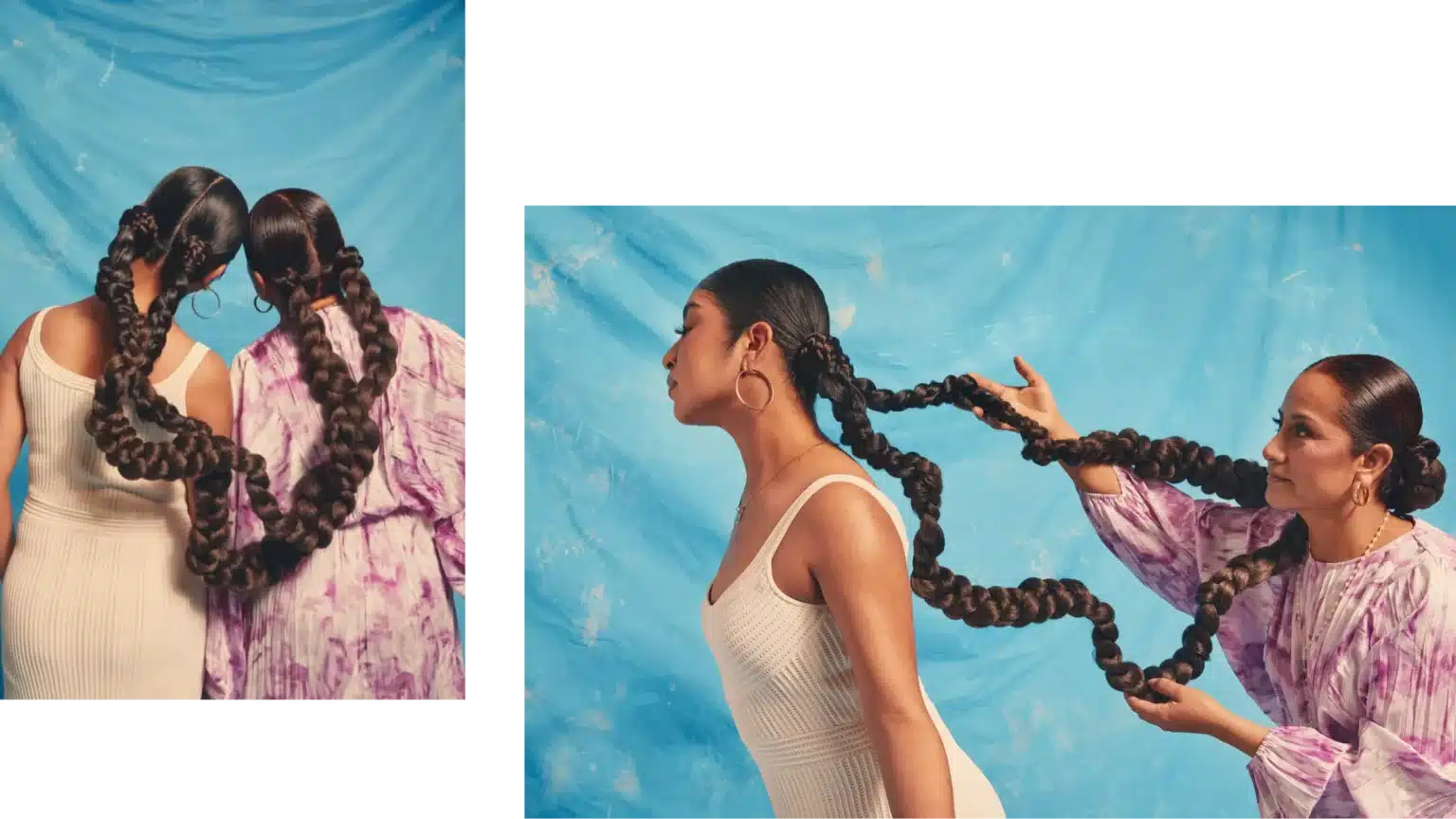
What prompted you to create a studio space?
Kind of like everything else, it was little stepping stones. First I was shooting in a small, tiny, tiny little storage room office situation when I needed a studio space. Then I got a shared artist space where again, it was really tiny. Because I was shooting a lot of product freelance, I needed a space I could shoot without having to always rent a studio.
Little by little, the space got bigger and bigger. The rent got higher and higher, but it made sense to do it that way. As my career grew, so did the studio size and space. And now I have a small photo studio, Bravo Studios, in the Arts District Boyle Heights area. My sister will help me sometimes with cleaning or opening up when I don’t have capacity to let renters into the studio.
I rarely shoot commission projects in my studio now. It’s for my own personal work, especially because I love having hair and makeup elements in the photos–adding braid extensions that are 10 feet long takes many hours to do. So it’s really nice to have a space to do it in.
You do work with Los Photos. Can you tell us about this organization?
I used to volunteer with Las Fotos Project as a mentor and they’re an org dedicated to mentoring teen girl and youth photographers from communities of color. I mentored with the organization for three years–it was a really fun experience. Basically, they give the students a free photography class for the semester, a camera for the semester, and they pair up the students with industry professionals like myself as mentors. We go to class with them every week and help them finish their final projects. Then at the end of the semester, they have a student exhibition where they show all the students’ work from the semester; all their families and loved ones and friends come and take pictures and are so proud of them.
I don’t feel like the goal is necessarily to train the next generation of photographers, although for many of the students that is their career goal, but it’s really about using photography as a way to empower ourselves, express ourselves, and advocate for our communities. It’s a really powerful program, full of so much joy and positivity and sisterhood and I really enjoyed mentoring there.
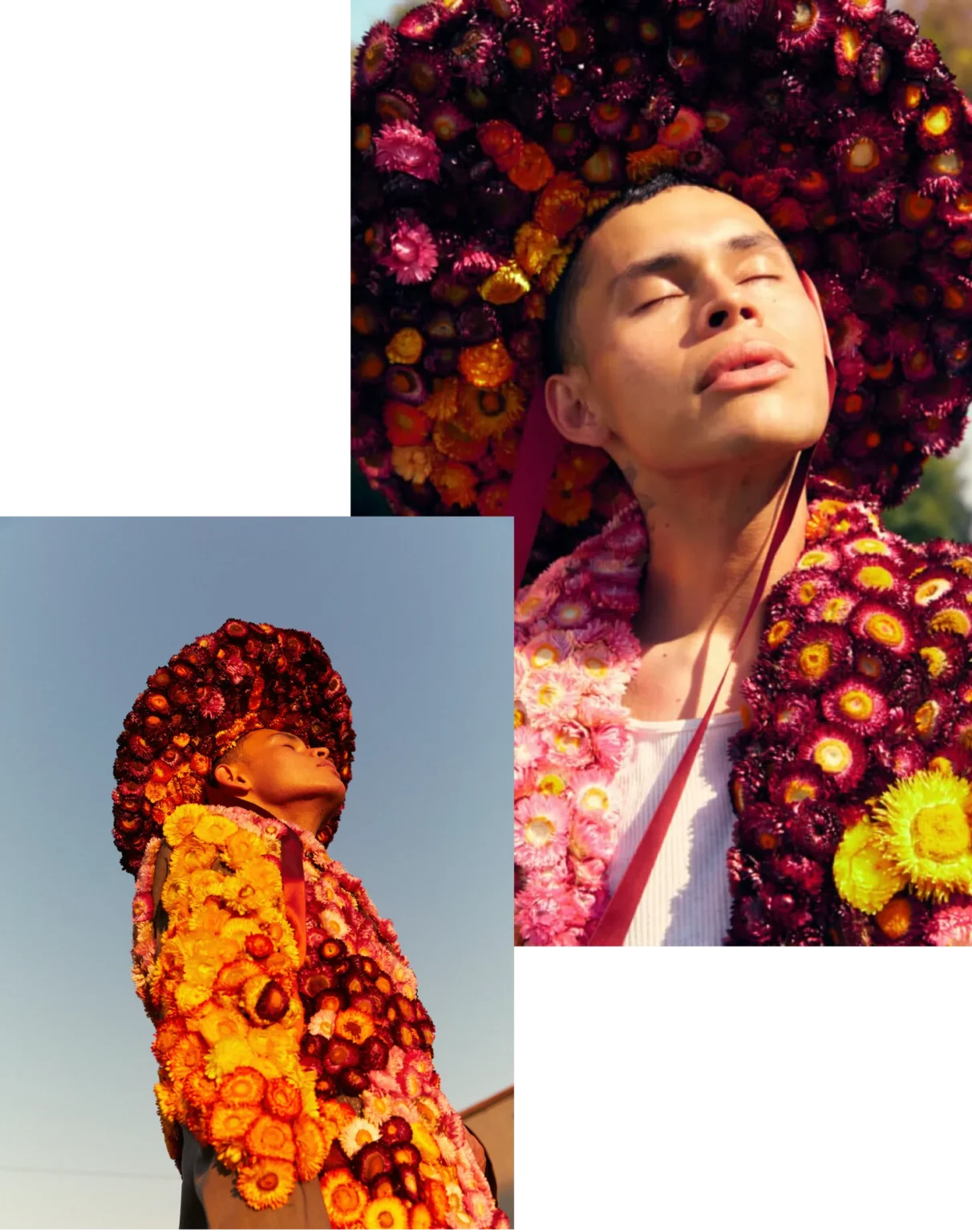
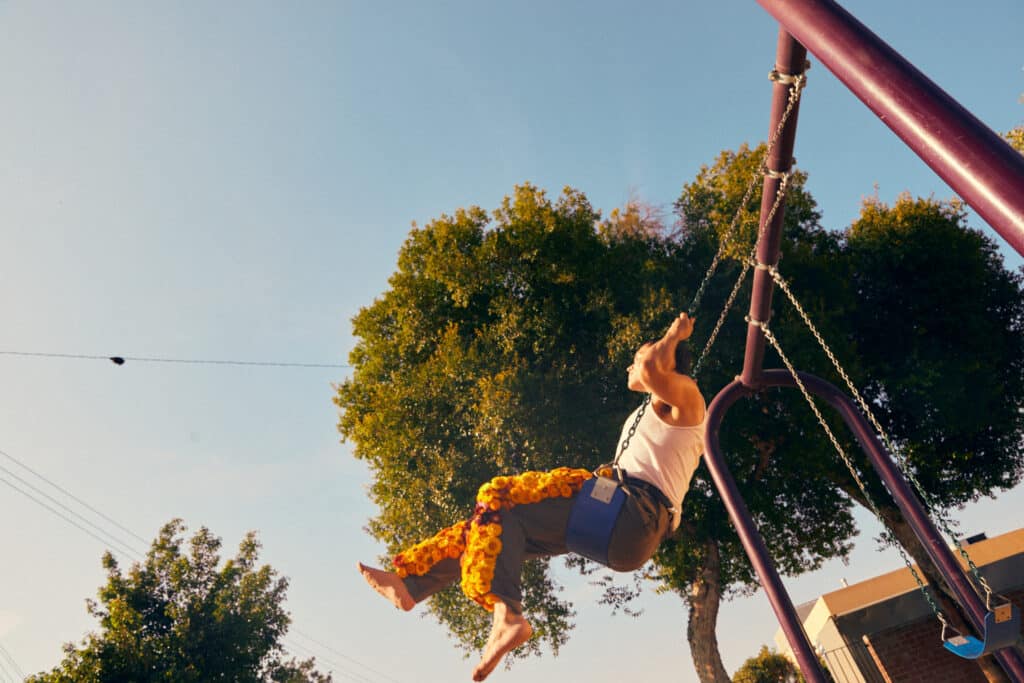
How do you get started working with an agency, and what does this add to your practice?
I first got introduced to my agency via a portfolio review, actually the very first portfolio review I did when I became a freelancer. I had been freelancing for only three months and I did the Palm Springs Photo Festival portfolio reviews. I had no intention of meeting a rep at the time because I knew it wasn’t at a point for it whatsoever. They paired me with a rep from Apostrophe Reps, her name is Lauren–Lauren’s still there, I love Lauren. We met and she really loved my work and said, “Hey I’d love to introduce you to Kelly who owns Apostrophe, just so she can meet you.” So a week or two after the Palm Springs Review I met Kelly along with Lauren via Zoom–and we stayed in touch.
Later, I saw that they had their AMP program, which was about amplifying BIPOC photographers and emerging photographers. It’s a mentorship program to help photographers understand how the commercial world works. So I applied, got into the program, did the program–and that built the relationship with Apostrophe further, because I was seeing them every week in our virtual classroom. They started recommending me for smaller jobs to their clients and I’d make sure to do as good a job as I possibly could, because I knew that it would reflect on me and how I can work on a commercial project. Over the course of three years, that relationship built until eventually they asked me to be on their roster.
I love working with Apostrophe–it is my dream agency. It’s woman-led, which I think is a breath of fresh air. They genuinely care about their artists and they really like rooting for us and trying to help us grow. I feel very grateful I met them right off the bat. After a few years of learning how to freelance and run my business and do commercial work and acquire commercial work, I was ready for that next step, which was to get a rep.
Luckily, I had been building that relationship. You’re planting seeds–and the thing with planting seeds is you’re not gonna get the tree overnight, it doesn’t appear the next day, trees grow over years. It’s having that patience and trust in the process. Sometimes it could sound scary to think, “Oh my gosh, it took you three years to build that relationship.” The reality is three years came and went, and it was better that I put that time and effort into something versus thinking. “I want something now.”
It’s nice having that partnership, someone who’s supporting you and cheering you on–going into every job knowing you have a team of folks who have your back and will also give you helpful guidance. There’s also an air of professionalism having artist representation gives me–I’m a young woman of color and sometimes folks assume what my experience level is, so having an artist rep is another tool that helps me garner that trust from potential clients. They know Apostrophe vetted me, and they can trust me, too.
At the same time, I will say it’s not like I rely on them to grow and build my career while I sit back and do nothing. It’s a partnership for a reason–I work really hard to network still, and market myself still, and also create work. The most important thing I can do is create work and keep creating genuinely.

How has using Format impacted your freelance career?
I’ve been using Format for my portfolio for a long time now–over five years. What I like about it is that it’s photo focused, with templates that center around photography. It made it really easy to show off my work beautifully–and because it was easy to use, it made it easy for me to constantly be updating my portfolio and not feeling like it was like a huge endeavor. I just upload things and then it appears really nicely in my portfolios. Format made it a seamless process for me.
Do you have any upcoming projects you can share with us?
I have one personal project I just shared that I’m really excited to talk about because I’ve been editing the footage and color grading the photos for so long. Basically I worked with a floral artist who covered a suit that I thrifted in flowers from head to toe. He also made a hat covered in flowers with a beautiful burgundy ribbon.
Then I worked with a talent named Pablo–I asked Pablo; “What are three sentimental places to you in Los Angeles, since you grew up here, that mean a lot to you?” He told me about a park he grew up going to with his friends and family, a beach he also went to with his family and friends a lot and that’s sentimental to him, and a third location.
I wanted the suit to represent the love you have for yourself on the inside and how that love comes out from you and leads to you being a more loving person in general–the way love transcends from your own self and you have it for yourself.
So it’s just him walking around these sentimental places, being really happy and joyful and powerful. I want to expand into directing, so I also involved and collaborated with a DP for this project. I’ve really been looking forward to sharing it with the world.
Enjoy and get inspired by Brittany Bravo’s work via her online portfolio website, created with Format, and follow her on Instagram to keep up with her latest projects.
Build Your Portfolio With Format
Rated #1 online portfolio builder by artists and makers.
